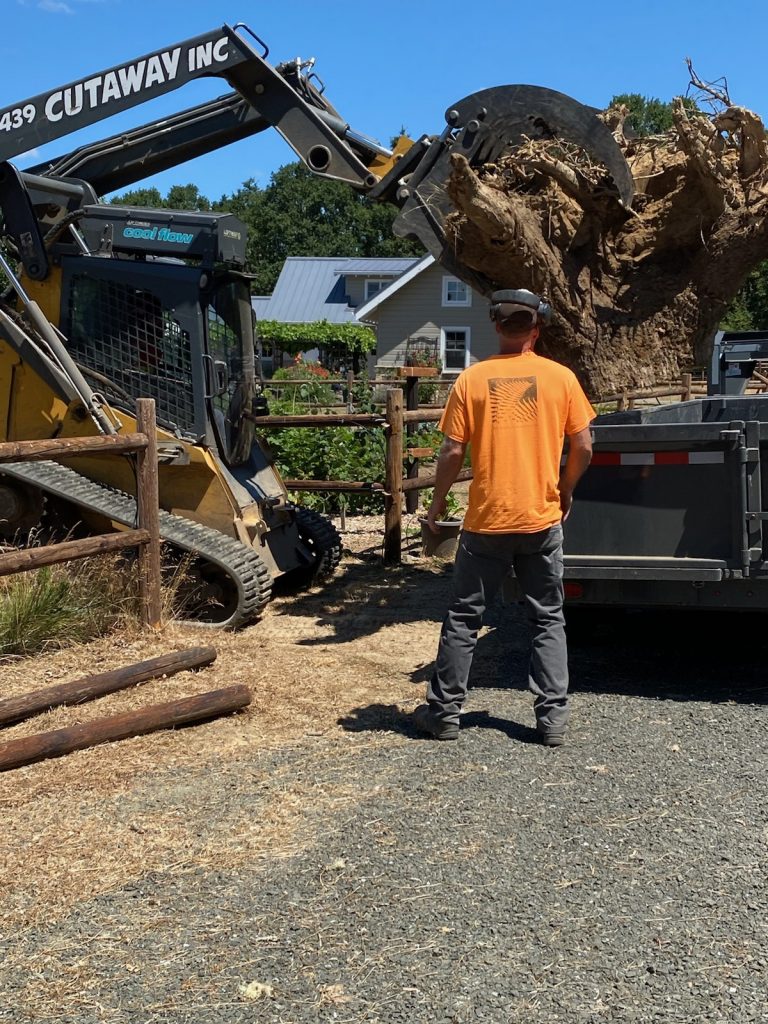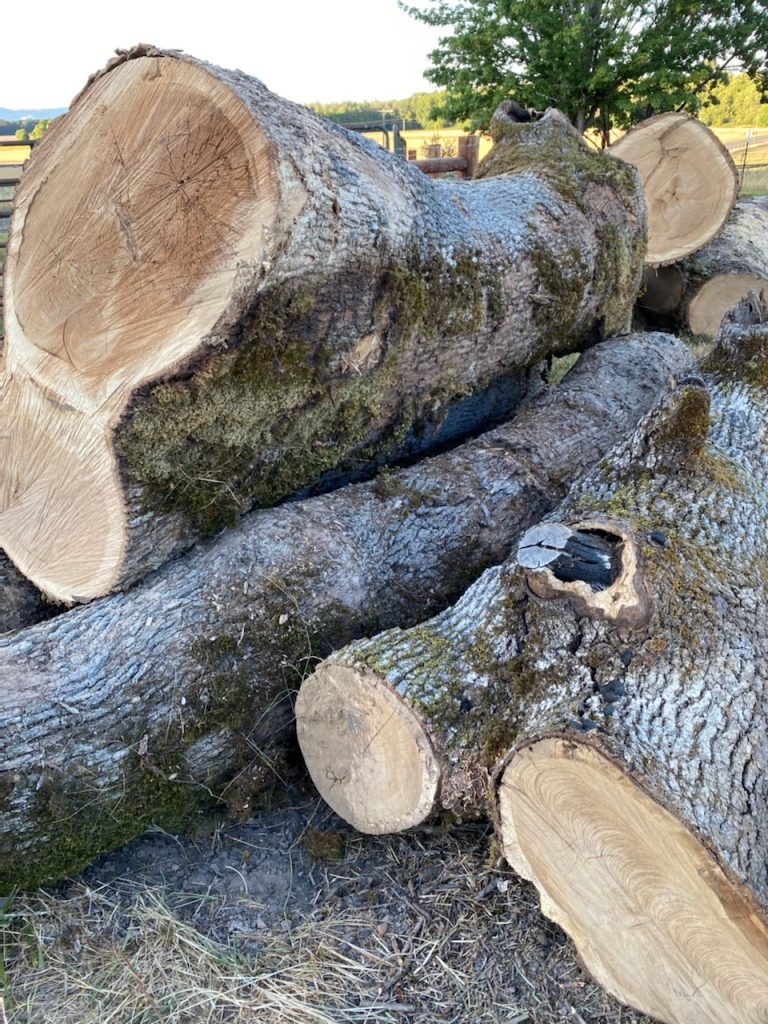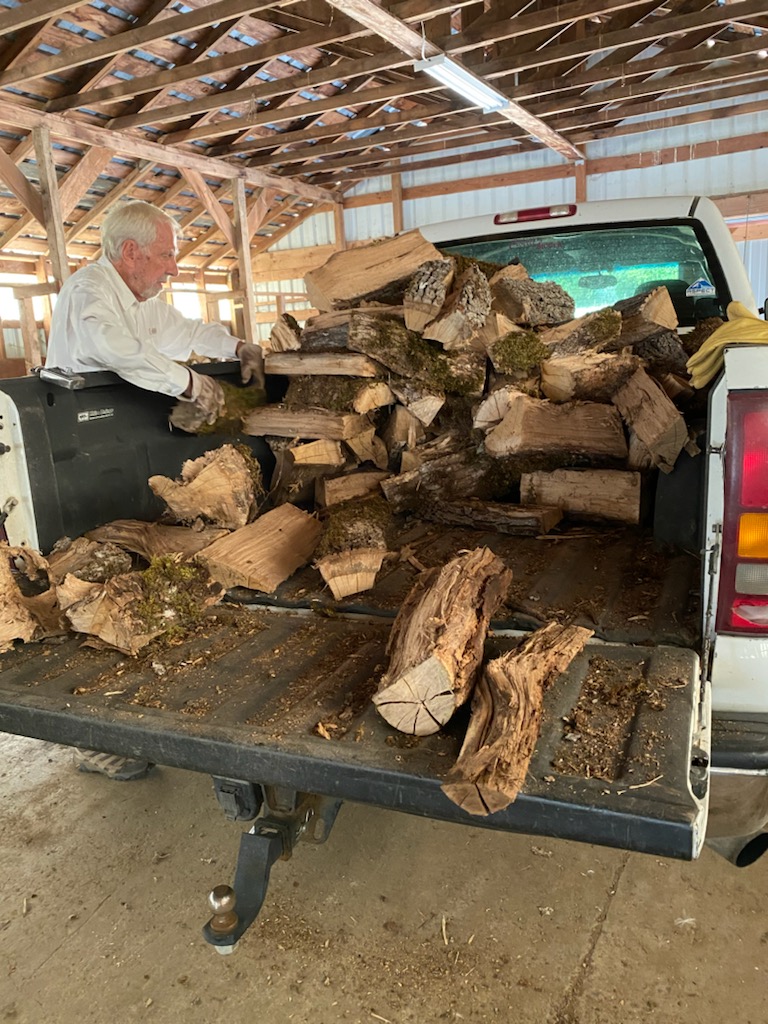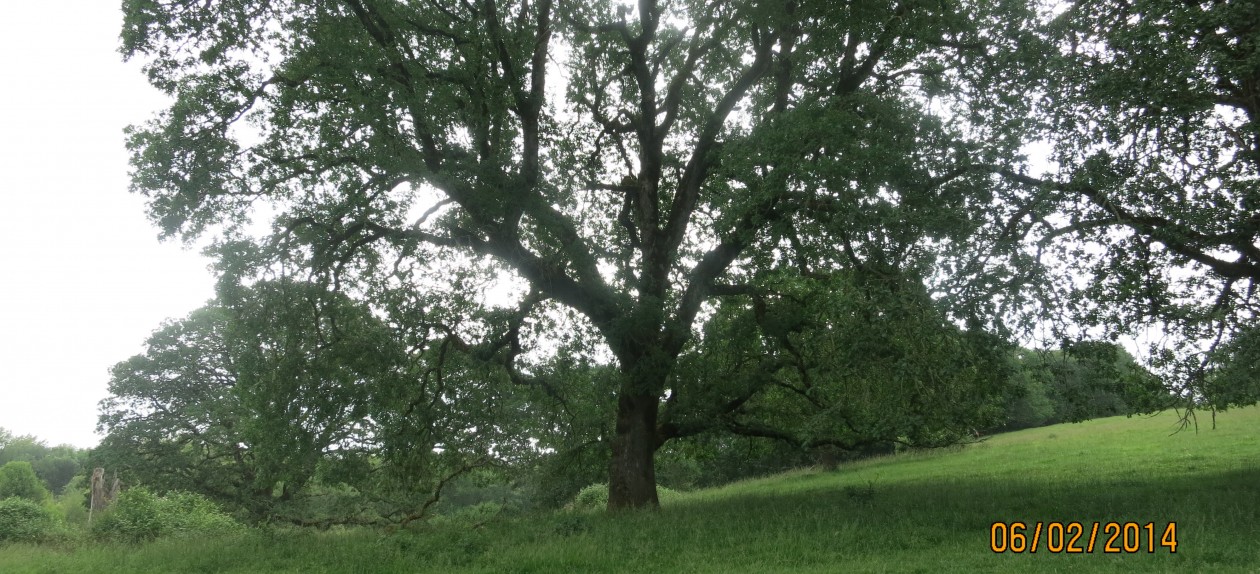I had to scroll back to find the date when the tree, the subject of this entry, crashed to the ground. December 24, and we watched as the ancient giant fell, directly alongside us, as if to give us the best seats in the house. Winter, then, but not icy, no high winds. Just the end, it seemed, of its life. Now I’m not so sure.
But I have to stop here to correct a grievous error, with thanks to my most dependable editor: If you have access to the “comments” attached to this blog, you will have seen that I mistakenly attributed the book, One Long River of Song, to David James Duncan. This lyrical, joyous, posthumous collection was instead written by Brian Doyle. My apologies! Duncan, btw, wrote The Reason Why and The Brothers K. (Now you don’t have to look him up, but you might like to find one of these books.)
Back to the tree. The first job, cleaning the branches and smaller limbs, was made easier by help from friendly neighbors, Marjorie and Ted, booted, helmeted up and ready to go.

Later in the winter, the Lorax came to do the larger work of detaching the main trunk, sawing the limbs into manageable chunks, and chipping the wild mass of debris. Look back in the blog to see a photo of their cute little truck.
We were surprised, and pleased, when Allen, one of our landscape guys/bee guy, asked if he might have the large, straight, stretch of the trunk. Well, sure. He intends to season the wood for a year, during which time he’ll build a mill out by his workshop. He plans to mill planks and use them as flooring in his home. Right. Pretty innovative. “I’ll just build a mill.”
So early this summer, here he came, provisioned with rental trailer, skid-steer, and a brother to collect the wood:

This is the root, which Allen won’t be saving, but has used his equipment to help clear the field for later F&W work. Below are the trunks of several other fallen trees he has collected. Can’t tell which is the one we are discussing.

Here’s a photo of a typical cross section. Note the rings of fire damage. And who knows who or what has been nibbling on the heart wood.

Last Sunday, Larry rented a splitter, and Mitch came over to put in a day’s hard labor outside his regular, day job:

This little doo-dah is run by the first assistant laborer, who simultaneously presses on a knob and depresses a lever which hydraulically moves the splitter. My job. Should be easy. Ha. I mean, it is easy, but very tiring to stand there pushing on that knob and pulling the lever. Of course, it is more difficult to heft those chunks of tree onto the platform. Anyway, after 7 hours hard work (I abandoned them at noon and Larry took over the knob-pushing job.) we were exhausted.
What comes next:



Should you need some firewood, let us know!
But I began this blog with the intention of talking about Oregon white oak, of which this is one sample. Quercus garryana. Musing on the life of this tree, whose life can hardly be said to be over, has led me to the Web, seeking information about these heritage trees. Briefly, only 3% of the original oak habitat remains in the Willamette Valley, due to fire suppression, development, and conversion to agricultural land. Of this 3%, 98% is on private land. Suddenly this seems to be a huge responsibility for our 100 acres of this land, and we need to learn a great deal more. I’ve located an organization called the Oak Accord, and will be in touch. I’ll let you know what they have to say.
Later, I mean. For now, I’ll just close by telling you that we had a sweet weekend at Black Butte with most of our family together — missing David and Caroline — but the five cousins were hilarious. Ranging from Will at one end and Andrew at the other, they soon became a pod. I learned some new things.
Bracing for some scorching weather in the next days, I remain, etc. Yours.
